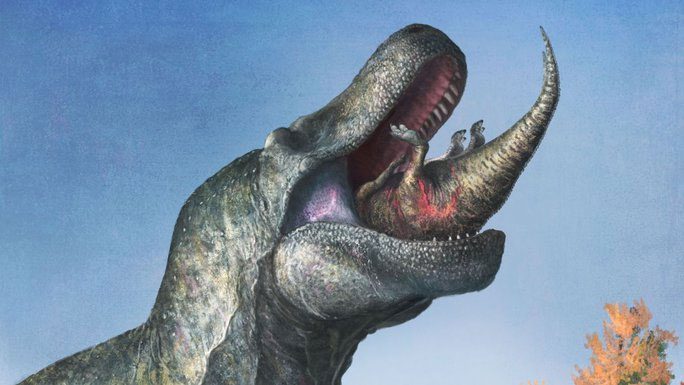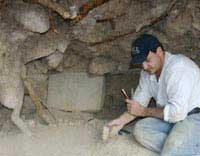A wry, eerie smile may be the secret to the strength of the most fearsome “killer” creatures ever to walk the Earth.
Research led by paleontologist Thomas Cullen from Auburn University (Alabama, USA) and paleontologist Mark Witton from the University of Portsmouth (UK) suggests that the Tyrannosaurus rex – a creature that reigned until the Chicxulub asteroid impact marked the extinction of the dinosaurs 66 million years ago – likely had thin lips.
This revelation prompts us to reconsider its appearance: not a creature that constantly flaunted terrifying teeth, but rather one with a tightly closed mouth that occasionally curled into a semblance of a ghastly smile.

T-rex likely had lizard-like lips – (Photo: Mark P. Witton).
However, this discovery reflects not only the “appearance” of one of the most terrifying monsters of all time but also sheds light on the secret behind their power.
Crocodiles can exemplify reptiles without lips. This gives them a more horrific appearance as they constantly display their fearsome teeth, but it also makes their teeth more susceptible to breakage due to insufficient moisture retention.
If the Tyrannosaurus rex had lips like a lizard, their teeth would have been much stronger and more durable, making their bites even more dangerous.
According to Live Science, this finding comes from the analysis of fossilized teeth from Daspletosaurus, a smaller, carnivorous dinosaur closely related to T-rex, preserved in a museum in Australia.

A closed mouth allowed this monster to maintain a more “killer” jaw – (Photo: Mark P. Witton).
The 500-day-old tooth was meticulously examined for wear. The quality of the enamel suggests it must have been in a tightly closed mouth. T-rex teeth are often well-preserved in similar fashion.
Comparisons with various other dinosaur and reptile species led them to be increasingly certain that T-rex must have had soft tissue covering its teeth. Estimates indicate that these would have been thin lips, possibly thinner and less sealed than lizard lips.
Scientists remain hopeful to find more evidence to further substantiate this remarkable discovery.
The study was recently published in the journal Science.





















































